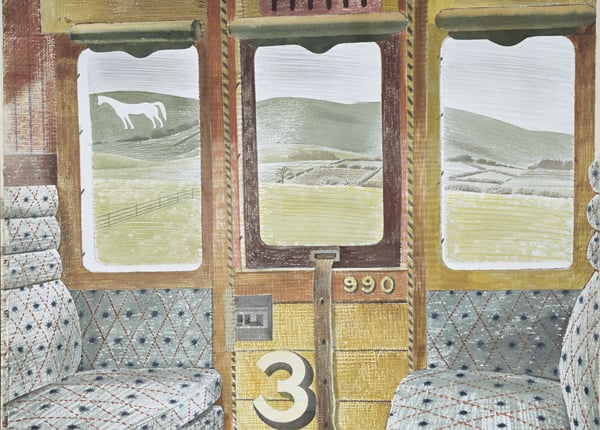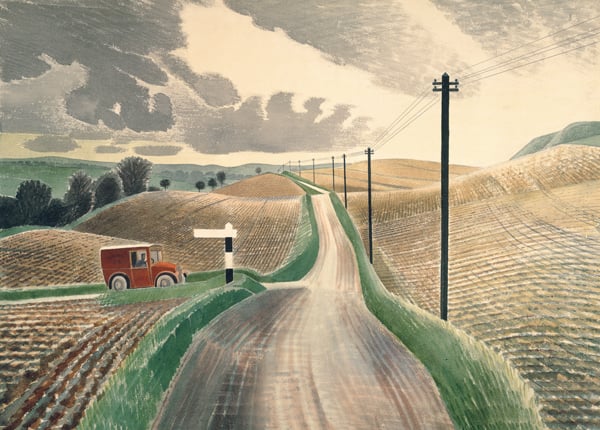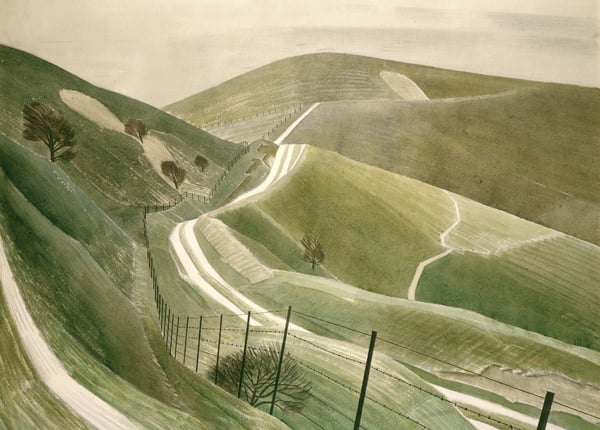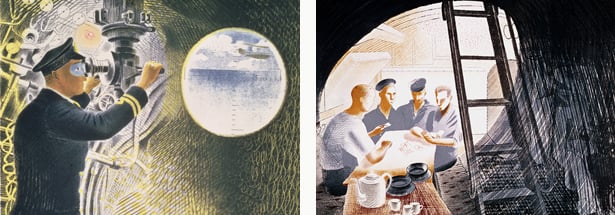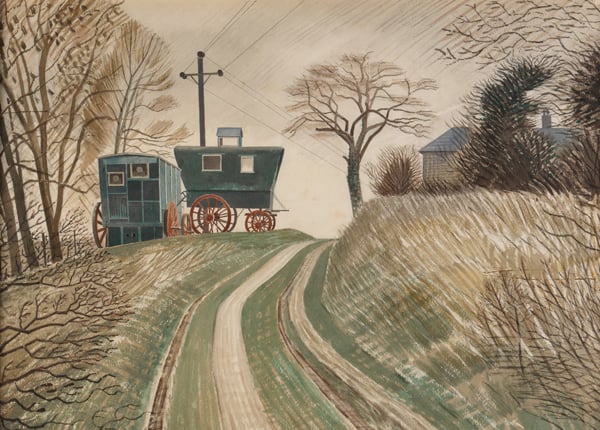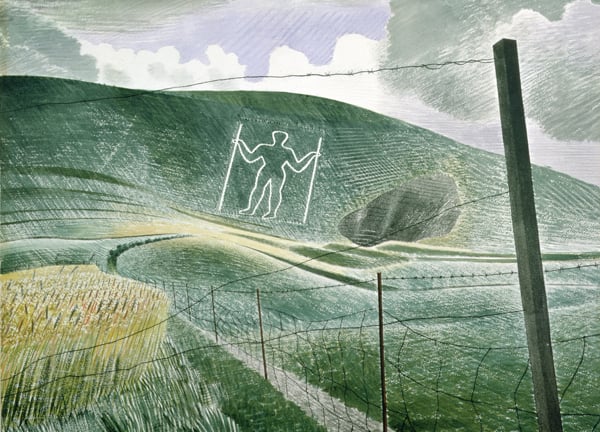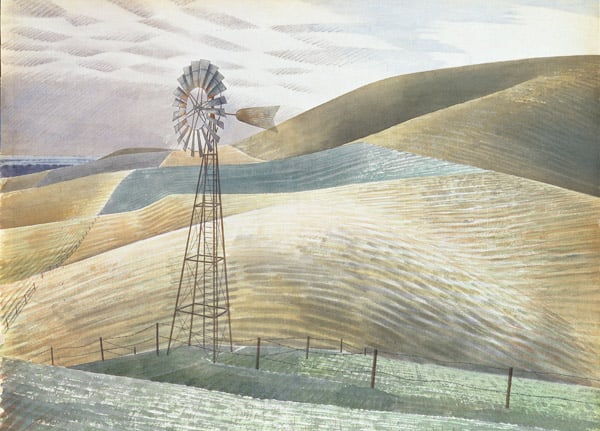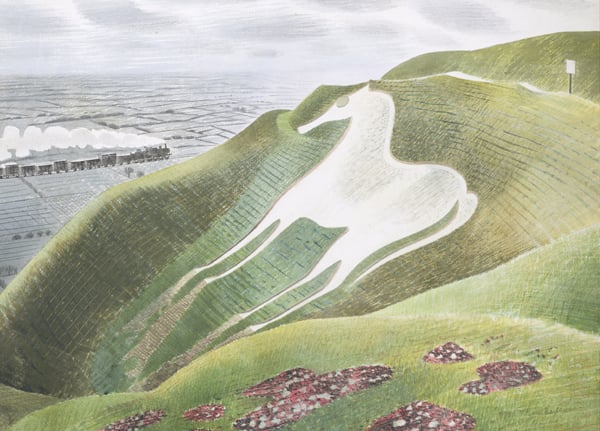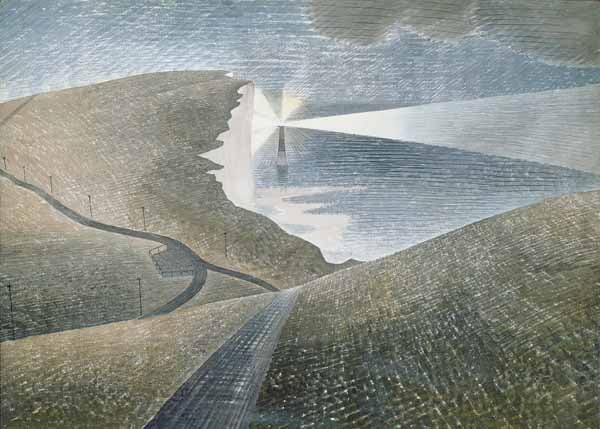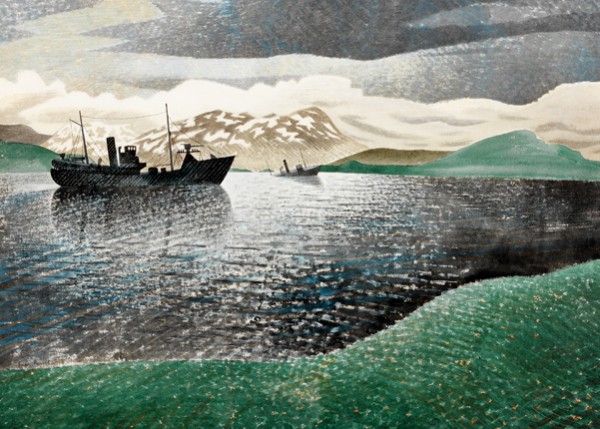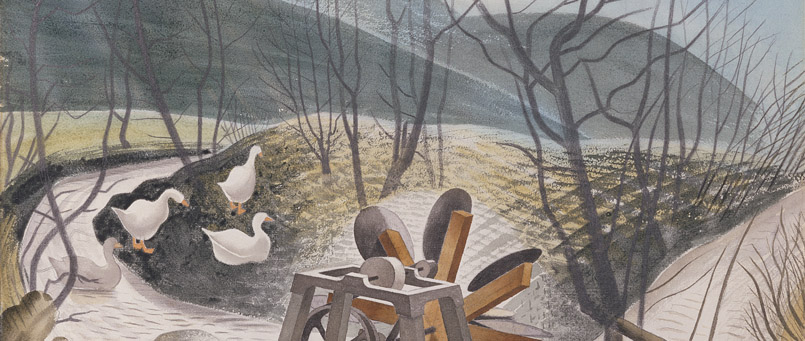
Ravilious, Dulwich Picture Gallery
“The Seurat of Sussex”
Laura Cumming, The Observer
The first major exhibition curated by James Russell to survey watercolours by celebrated British artist Eric Ravilious opened on 1 April 2015 at the Dulwich Picture Gallery. Well known for his iconic work for Wedgwood, Ravilious is widely considered one of the key figures in mid-20th century British design but he was also one of the finest watercolourists of the century.
The show features iconic paintings such as Westbury Horse (1939) and Train Landscape (1940) alongside rarely seen works from private collections, ‘Ravilious’ (1 April-31 August 2015) follows the evolution of a remarkable talent and cement the artist’s position as one of the finest watercolourists of the 20th century.
This exhibition adopts a thematic approach to a career which spanned peace and war, breaking down the chronology which often separates the two periods. This highlights how Ravilious integrated rather than abandoned many of his ideas and instincts when he was appointed as an official War Artist in 1939.
A focused selection of over 90 watercolours, complemented by selected lithographs, wood engravings and archive materials, highlights common characteristics in Ravilious’s painting, ultimately bringing us closer to understanding the motives and ideas of an artist who famously said little about his work.
The son of a London antique dealer, Ravilous studied at the Royal College of Art (1922–5), where he was taught by Paul Nash and became close friends with Edward Bawden. He grew up in Sussex, and was especially inspired by the landscape of the South Downs and their chalk figures.
Ravilous astonishingly prolific career spanned peace and war. He began as a muralist, not becoming known as an artist until 1924, and going on to be one of the best known of the 1930s. He also worked as a lithographer and printer and produced designs for Wedgwood, including the celebration mug (1936) for the coronation of King Edward VIII.
With the outbreak of World War II Ravilious was assigned to the Royal Navy as one of the first Official War Artists finding new ways to capture and preserve the fleeting record of passing time. He was killed in 1942 while accompanying a Royal Air Force air sea rescue mission. He was only 39.
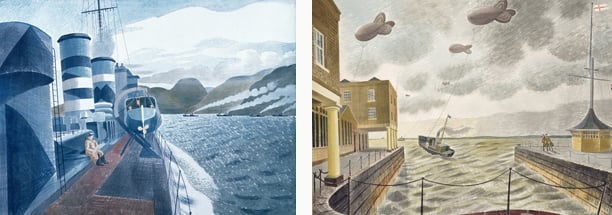
Left: Barrage Balloons Outside a British Port, Eric Ravilious, Leeds Museums and Galleries
Right: Leaving Scapa Flow, Eric Ravilious, © Bradford Art Galleries
Over 80 watercolours will be on display at the Dulwich Picture Gallery – including famous works like Train Landscape and Westbury Horse as well as rarely seen works from private collections providing an inspiring look at his work between the mid-1920s and his death in 1942.
Said to be inspired by the films of Alfred Hitchcock Ravilious’ images rarely contain figures and yet his shadowy interiors and strange perspectives often create a sense of human presence.
“This exhibition has given me the opportunity to look more closely at familiar paintings, and to explore others for the first time. I love Ravilious’s playfulness, and the subtle, surreptitious use of distorted geometries in his paintings, and the fact that he made so little public comment about his own work. In some ways this has made my job more difficult, but at the same time it is liberating: anyone can enjoy the work of Eric Ravilious, but there is also plenty there for people who want to go deeper”
James Russell, Curator.
Ravilious, Dulwich Picture Gallery
1 April – 31 August 2015

